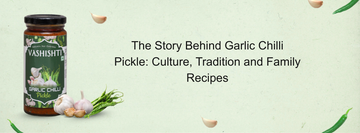Honey is a great substitute for refined sugar, which is only a source of empty calories. This wonderful natural ingredient not only sweetens your life, but it is also high in minerals, nutrients, and living enzymes. Before purchasing honey, consider its purity. The main issue with honey is its quality. Finding pure Natural honey can be difficult. Adulteration, like that of many other food commodities, is common. Commercial honey is frequently mixed with glucose solution, high fructose corn syrup, and other ingredients you may not even be aware of. However, because food regulations are still sketchy, you can never be too sure, and this may not be a fool proof method. So, can you tell the difference between genuine and bogus honey? To find out the truth, conduct a test at home.
Here are some simple ways to test the purity of honey and identify adulterated honey.
- The Thumb Test
Place a drop of honey on your thumb and see if it spills or spreads like any other liquid. It may not be pure if it does. The difference between pure and impure honey is that pure honey is thick and impure honey is watery. Pure honey adheres to the surface on which it is applied and does not leak. Furthermore, due to the addition of sugar, the flavour of impure honey may remain.
- The Water Test
Take a teaspoon of honey and dissolve it in a glass of water. Fake or adulterated honey dissolves in water, but true honey, which has a thicker texture, settles as lumps at the bottom of the glass. Blotting paper or a white cloth serve the same purpose. Pure honey will not soak or leave stains if poured over the two.
- The Flame Test
You may be surprised to learn that pure honey is combustible. However, we ask that you proceed with extreme caution and at your own risk when performing this test. Dip a dry matchstick in honey and set it aside. Strike the matchbox with the matchstick. Your honey is pure if it glows up. It could be adulterated if it doesn't light, and it could also have moisture added to it.
- Use Vinegar
Mix 1 tablespoon honey, 2 tablespoons water, and 2-3 drops vinegar essence. If this combination foams up, there's a good likelihood your honey has been tampered with.
- The Heat Test
When pure honey is heated, it caramelizes quickly and does not foam. However, impure honey may not caramelize and become bubbly when heated. Many differences between pure and adulterated honey can be seen with the naked eye by examining its physical properties. Pure honey is dense and only flows in a stream. It has a soft texture, does not separate into layers, and has a pleasant sweet aroma. When you consume raw honey, which is honey in its purest form, you may experience a slight tingling sensation or a mild burning sensation in your throat.
- Blot Test
To see if your honey has been diluted with water, do the following: Using blotting paper or a paper towel, remove the excess oil. Apply a small amount of honey on it. If it absorbs or leaves a watermark, your honey could be contaminated. A blotting paper or a paper towel will not absorb pure honey. A paper towel, on the other hand, would not absorb honey that has been diluted with most sugar syrups. The watermark that impure honey may leave behind is a trustworthy determinant in this case.
- Taste Test
Pure honey has a short-term flavour that fades quickly. Heating honey also changes its flavour and depletes its nutritional value. The added sugar and other sweeteners in adulterated honey, on the other hand, leave a lingering aftertaste. A skilled honey taster may even tell the difference between pure and impure honey by smell. In comparison to impure honey, which has an industrial sour scent, pure honey has a gentle aroma of particular flowers and wild grass.
- Ingredients Test
In commercially sold honey, adulteration is common. Most honey produced in large factories contains glucose solution, high fructose corn syrup, or other potentially harmful ingredients. Examining the label of your honey before purchasing it is perhaps the simplest way to detect adulteration. If the ingredients list includes words like "added flavours" or "additives," the manufacturer may not be telling or selling the truth. The only ingredient in pure honey should be honey itself. Any other ingredient suggests adulteration.
- Ant Test
Another popular misunderstanding is that "pure honey does not attract ants." There's no reason why ants wouldn't be drawn to such a tasty treat. Because ants are attracted to honey, honey bees create a sticky lining of propolis to protect their hive from ant attack.
Vashisthi believes that Vedic Indian learning brings nature and alchemy into balance for a more fulfilling life. Let us return to our roots by resurrecting the pure and nourishing. We've perfected the art of blending old Indian dietary wisdom that feeds both the body and the mind.



